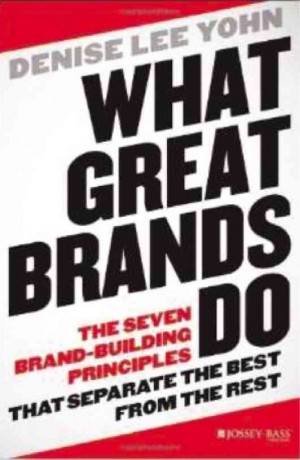Branding should ‘pull,’ not ‘push’
Within marketing circles—in the real rough and tumble world and the laboratory called MBA classes—strategies usually fall under “push” and “pull.”
In the same way that marketers have to choose between getting more market share by pricing low and increasing profit margin by pricing high, what marketing strategy to adopt is left to the judgment call of the chief marketing officer or no less than the CEO.
However, this book, “What Great Brands Do,” challenges many assumptions among marketing people.
Author Denise Lee Yohn dishes out earth-shaking ideas—like these: “ignore trends,” “don’t chase customers,” “sweat the small stuff” and “never give back.”
These are actually culled from the titles of the eight chapters that are full of success stories—many of which are inside track accounts of very successful brands. Yes, because they continue to perform well in the marketplace.
Article continues after this advertisement“Just Do It,” the long-running tagline of Nike is a highly successful branding statement. What’s behind its phenomenal success?
Article continues after this advertisementYohn explains in the book: “Nike’s Wieden+Kennedy agency had a series of simple ads that showed athletes of all kinds doing what athletes do – sweating, straining, running and jumping… All of them spoke about what they do, and why they do it, followed by the on-screen invitation: “Just Do It.”
As the author narrates it, Scott Bedbury, Nike’s marketing chief in 1987, declared: “It is not about products; it is about a brand ethos.”
The point is to establish an “emotional connection” with all types of customers.
“We make our purchase decisions based on how products promise to make us feel,” says the author.
Another case involves Pampers, Europe’s top-selling disposable diaper that was rapidly losing its market share to a close competitor in 1997.
Pampers marketers convened focus groups—and one insight emerged.
Pampers was focusing on “dryness” and yet the mothers were more concerned about their babies’ “health and development.”
Yohn says it aptly: “The organization morphed from a narrow focus on product benefits to a broad focus on delighting moms and enhancing their babies’ ‘development.’”
Even Pampers’ office was transformed into having “baby-friendly color schemes.”
What business is our brand in?
Yohn advances this question – a question we at the Asian Institute of Management asked over 30 years ago, inspired by the ground-breaking article of Theodore Levitt published by Harvard.
Yohn says Levitt’s observation “made more than a half century ago, is more relevant today than ever.”
It is called “positioning.”
She asks: Are fast-food brands in the drive-through business or are they in the good-food-fast business?
Are airline companies in the transportation business or are they in the business-productivity business?
Before building our brand, she advises, the question “what business are you in” must first be settled. And don’t forget to “develop deeper, richer, stronger connections with customers and sustain their claims to strong and differentiated value propositions.”
Great brands challenge trends. Yohn has many market histories and examples to prove the point that getting out of the pack will spell success.
Oprah Winfrey did not follow trends, unlike Martha Stewart, Yohn reveals.
“Unlike many other talk shows, she took herself off the air when her show was still successful and one of the most effective branding platforms ever created,” she says.
She adds: The concept of not following the trend “is very similar to the ideas advanced in the seminal best-selling book “Blue Ocean Strategy.” “Companies grow best when they leave existing market spaces that are bloody with cut-throat competition (red oceans) and create instead uncontested market spaces (blue oceans).
Branding is also about not being afraid of polarizing your would-be customers.”
“Red Bull,” the strong drink that artists, journalists and truck drivers drink to keep them awake—had an equal number of customers who love it and customers who avoid it like a plague.
“If you stand for something, some people will love you and some will hate you,” said Thomas Grabner, then CEO of Kastner & Partners, Red Bull’s advertising agency.
The book values “customer experience” beyond a so-called great brand. What is the use of a great brand when delivery is bad? “Sweat the small stuff,” says Yohn. Every detail is important.
“Your brand is a magnet,” she concludes.
It pulls, not pushes—and does much more besides making your customers love you. What’s true in real life, not pushing yourself, is true in the business world. The principles are actually LIFE principles.
